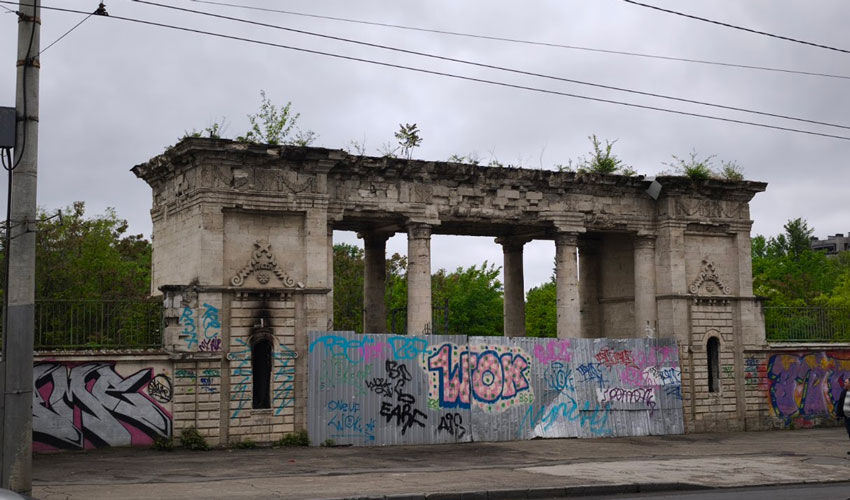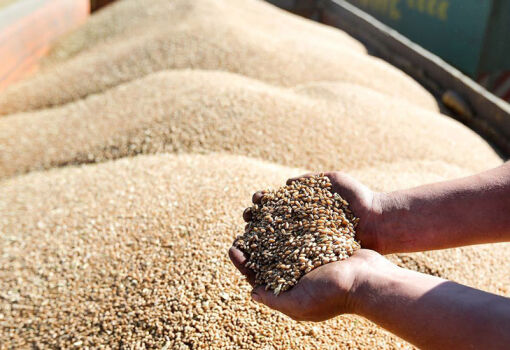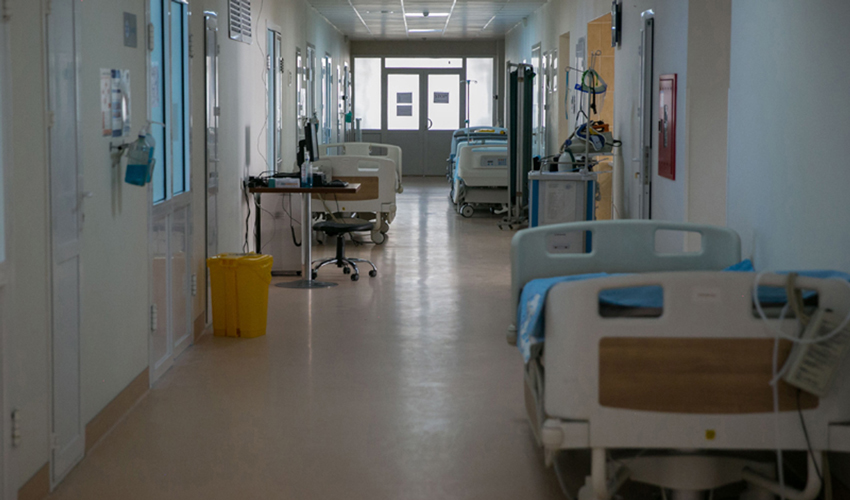
According to Dan Perchun, the funds allocated by the government for the development of sports infrastructure are primarily aimed at covering urgent needs in this area. “We have not progressed beyond the pre-feasibility study. The economic growth plan provides for €20 million, which is needed for sports schools, the arena and the Olympic training center. In parallel, a full feasibility study of the National Stadium will be developed, which will give us an understanding of the final cost of the project. Preliminarily, this work will cost about 10 million lei. We are working on this project together with the Ministry of Infrastructure and Regional Development, which will probably take over its realization. We are searching for and allocating the necessary funds,” the head of the ministry said.
The project to build the National Stadium became relevant after the Republican Stadium was dismantled in 2007. Several places for its location were proposed. At one time it was even inaugurated the pedestal with the ball near the capital’s circus and it was announced that a modern stadium would be erected in the area between the circus and Renascheteria Nazionale Street.
There were several other loud declarations and even announced projects of stadium construction in different places of Chisinau. But the matter did not go further than declarations.
Last year, the project was brought up again. The former Minister of Infrastructure and Regional Development Andrei Spinu declared that the project is planned to be realized within five years and will require an investment of €85 million. Most of the sum is allocated for architectural works and construction of the building (see the specific amounts in the table).
The location for the construction of the venue was also chosen: on the M2 highway “Chisinau – Stavceni”, near the Chișinău Arena, on a plot of land owned by the state. Earlier, four other options for the construction of the arena were also considered: on Dacia Boulevard on the road to the airport, on the M3 highway near the village of Bacioi, on Hincesti highway and on Riscaniovca, on the territory of the sports complex of the Technical University. The first option was a compromise.
The stadium concept was presented to the public, according to which the National Stadium corresponds to the fourth, highest category of UEFA (Union of European Football Associations). Arenas of this category must have at least eight thousand seats, a field with grass or artificial turf licensed by FIFA (Federation Internationale de Football Association), a developed infrastructure to receive teams, referees, media and VIP-guests (see more details in the table). Such arenas have the right to host matches of the final part of the World Cup, European Football Championships, Champions League and Europa League.
There are eight stadiums of this category in Moldova’s neighboring countries – six in Ukraine and two in Romania. The National Stadium in Bucharest, commissioned in 2011, took three and a half years to build. Its cost amounted to €234 million, capacity – 55.6 thousand spectators with the possibility of expansion up to 63 thousand seats. In 2012, the Europa League final was held at this arena – for the first time in Romania a match of such rank. The Olympic Stadium in Kiev was built a century ago, but before the 2012 European Championship (CE), which was held in Ukraine and Poland, it was reconstructed to meet the UEFA requirements for stadiums of the fourth category. The work took about three years and required €440 million in investment. The stadium has a capacity of 70 thousand spectators, during concerts its capacity can be increased to 100 thousand people. The arena hosted five matches of the 2012 World Cup, including the final between Spain and Italy (4:0), and in 2018 – the final of the Champions League.
The Moldovan authorities cannot finance the construction of the new National Stadium themselves. They will probably have to look for investors. According to Andrei Spinu, the option of public-private partnership with the participation of UEFA, which can invest part of the funds, is also being considered.
Even despite the rather optimistic statements of the authorities, experts doubt the profitability of the project. “I have been to a stadium in the United States, which regularly hosts events,” said economic expert Veaceslav Ionitsa. – For 30 years it has been generating revenues of $1 million a day. Yes, the demand for cultural services is slowly developing, but so far we have very few spectators. We don’t have sports, like theater, that are not profitable. I am in favor of sports being financially supported by the state, but it should be done correctly. So that it does not turn out like with other infrastructure projects, such as the Leova-Bumbeta road. It is worth waiting for the feasibility study, but until then this project has a bitter taste. Unfortunately, we publish a lot of declarations about infrastructure projects that are not realized. The authorities pursue not economic goals, but political ones. Perhaps, the National Stadium will not join the number of such projects”.
Based on Dan Percun’s words, who made it clear that the National Stadium construction project is not a priority at the moment, the authorities are unlikely to return to it before the parliamentary elections. Such large-scale projects in our country depend on the political situation, which can change dramatically.
In the meantime, Moldova remains the only European country without a national arena that meets the high requirements of UEFA and FIFA.
|
Approximate amount of investment* in the National Stadium project |
||
|
Stage |
Cost |
Share of total amount |
| Development of feasibility study |
€425k |
0,5% |
| Design |
€5.1m |
6% |
| Organization of project implementation works |
€425k |
0,5% |
| Architectural works |
€24.65 mln |
29% |
| Erection of stadium structure |
€29.75 million |
35% |
| Electrical installations |
€4.25 million |
5% |
| Sanitary installations |
€2.55 million |
3% |
| Ventilation, air conditioning and heating systems |
€2.55 million |
3% |
| Low voltage systems |
€1.7 million |
2% |
| Equipment installation |
€5.1 million |
6% |
| Furniture and equipment |
€1.7 million |
2% |
| Improvement of the surrounding area |
€5.1 million |
6% |
| Consulting and technical support |
€1.7 million |
2% |
| * According to the concept presented by the Ministry of Infrastructure and Regional Development | ||
|
Requirements for UEFA category four arenas |
|
| Capacity | At least 8.000 spectators (the concept of the National Stadium in Moldova assumes 25.000 spectators) |
| Field dimensions | 105 x 68 m (grass or artificial turf, licensed by FIFA) |
| Infrastructure | Covered stands equipped with individual seats |
| Two locker rooms for teams, capable of accommodating at least 25 people | |
| Room for referees with an area of 20 sq. m. or more | |
| Specialized room for doping control and first aid treatment | |
| Uninterrupted video surveillance system for spectators and stadium territory with a separate technical room | |
| Lighting system with capacity from 1.400 lux | |
| VIP-parking lot (from 150 spaces) | |
| VIP-sector for fans of the home team (from 500 seats) | |
| VIP-sector for fans of the home team (from 100 seats) | |
| VIP-hospitality area from 400 sq. m. | |
| Parking lots for TV broadcasting vehicles with the area from 1 thousand sq. m. | |
| Workspace for photographers (from 25 people) | |
| Media workspace of 200 square meters or more for more than 75 people | |
| Space for television camera platforms of at least 10 square meters for four installations | |
| A press box with a minimum of 100 seats, 50 of which are tables | |
| Space for press conferences (75 people), TV studios (two and one overlooking the pitch), TV commentators (from 25), positions for post-match interviews (from four) | |











